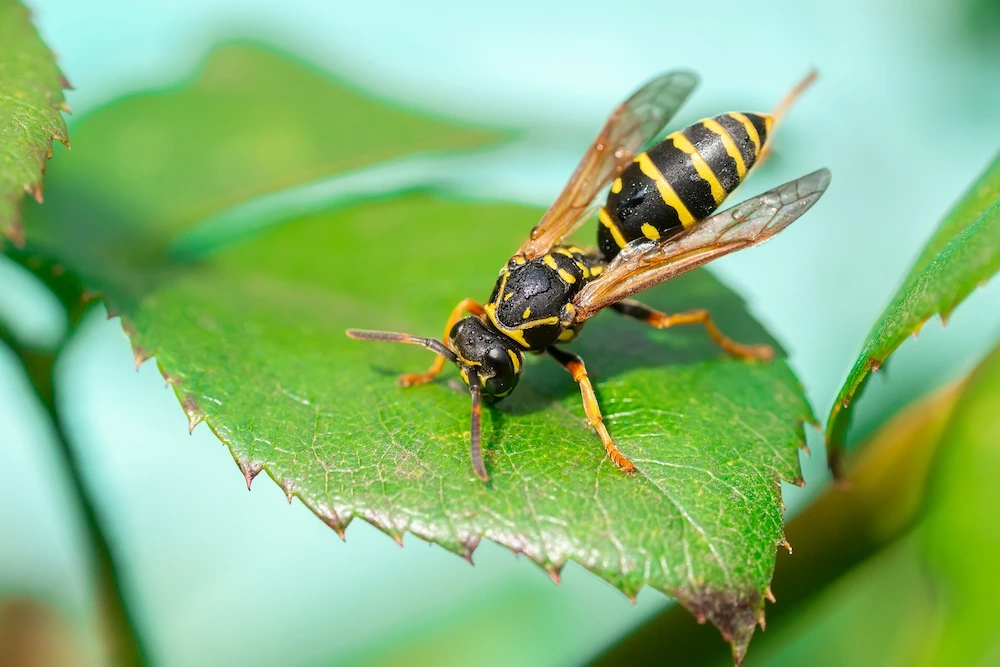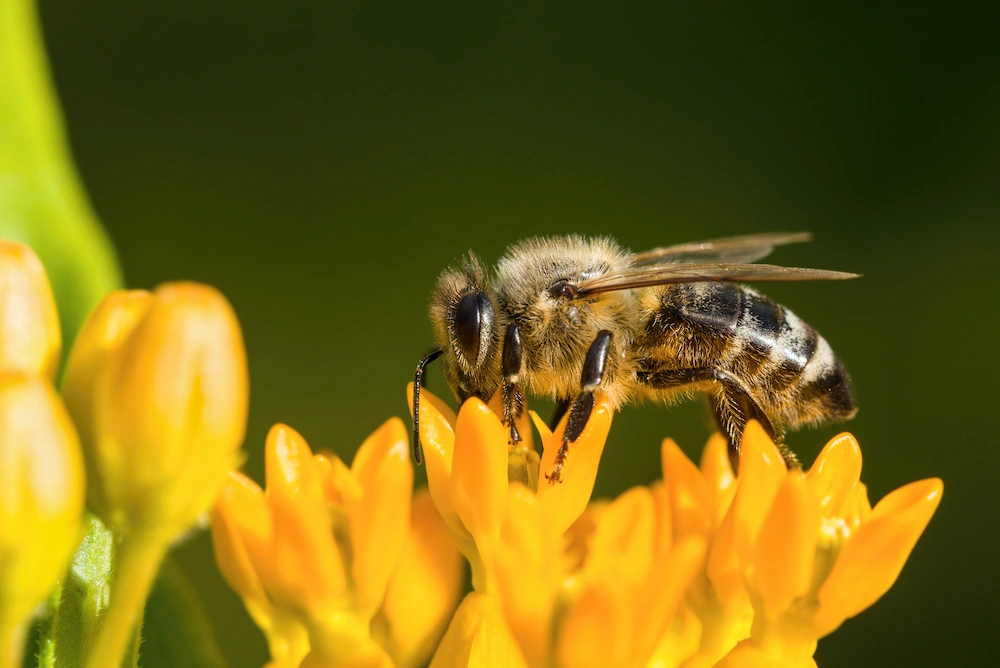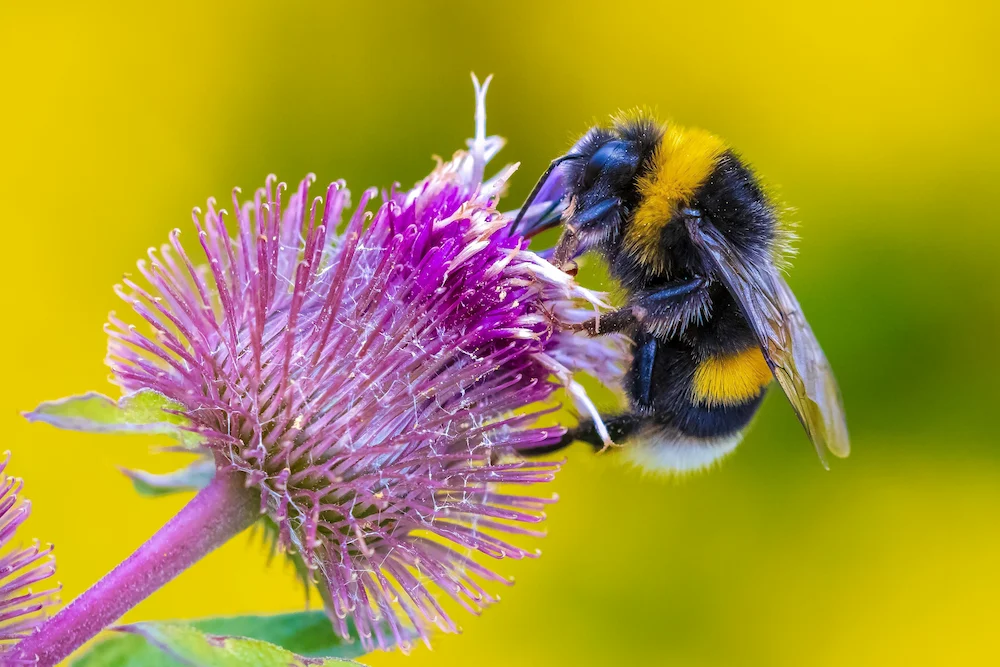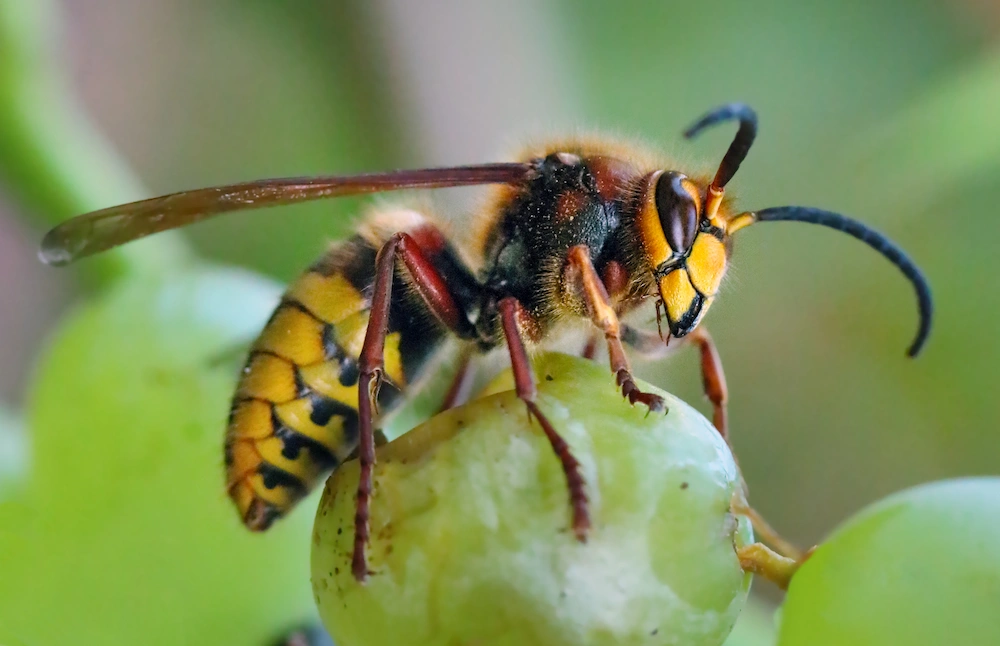The Various Personalities of 5 Stinging Pests
The Various Personalities of 5 Stinging Pests
Summary: Stinging insects are among the most common summer pests, but do they have actual personalities? This blog finds out by examining the research done on insect personalities before discussing the different habits of 5 stinging pests. Green Pest Services handles stinging pest issues with care.
Stinging insects are some of the more intimidating pests, thanks to their loud buzzing and swarming. Have you noticed that each species has its own temperament? For example, yellow jackets are much more aggressive than honeybees.
Every stinging insect is defensive to an extent, but some take it to another level. That’s why it’s helpful to know the difference between the general species in case you find them in your yard. Let’s learn how pests might show off their personalities before we examine each stinging insect’s character.
How Can Bugs Have Personalities?

We can’t speak with pests to hear their thoughts (for now…), so everything we know about insects and their lifestyles comes from observation. It’s very possible that insects have complex personalities similar to those of humans, but it’s hard to tell.
That being said, scientists have found evidence that stinging insects demonstrate the same personality traits as their queens! This is likely because of genetics since the queen produces all of the offspring in her colony. It explains why certain colonies are more reactive than others.
Of course, we need more research on the genetic structures and behavioral constructs of stinging pests to say anything more concrete. We do know that they can be more aggressive when they are older or have limited access to food.
There’s no evidence of stinging insects taking revenge on people by seeking them out and stinging them. When they swarm, it’s because the workers released “alarm” pheromones (scent chemicals) that rally the others to attack the threat.
Now that we have an idea of where a stinging insect’s personality comes from, let’s take a closer look at 5 common pests to see how their personalities play out in daily life.
Wasps

Simply put, wasps are motivated by survival and the health of their colony. This means that they aren’t the friendliest insects ever, but that’s not surprising. Wasps seem to follow their queen’s example through a combination of genetics and observation. These pests are fast learners. They’re even able to differentiate between each other’s faces and use this ability to protect their nest from intruders.
Wasps have worse tempers in the fall because they’re more desperate to find sugary food and determined to protect their queen before she overwinters. If they’re disturbed, they can sting us repeatedly since they have smooth stingers. Paper wasps will bite and sting, so you really don’t want to cross them. Generally, wasps don’t want to cause trouble when they’re left alone, but they won’t hesitate to defend their colony and nest against enemies.
Honeybees

Honeybees are far less aggressive than wasps, so the only reason they sting is when their colony and nest are truly threatened. They would rather avoid stinging us because their barbed stingers stick in our skin and disconnect from their bodies, effectively killing them. That’s why you’ll often see honeybees minding their own beeswax (get it?) and being docile.
Like other stingers, honeybees are impacted by their environment. If it’s blazing hot or pouring rain, they won’t be in the best mood. It’s even more ideal to avoid irritating honeybees (or any stinging pests) in these conditions. One type of honeybee that’s actually aggressive is the Africanized honeybee. These bees don’t need much, if any, prompting, to attack their perceived threats.
Yellow Jackets

Possibly the most aggressive stinging pests we regularly see, yellow jackets are known for their bad tempers. Since they scavenge for sweets and protein-heavy foods, they’re usually found near our outdoor parties. This makes them seem more aggressive (which they still are) since they want the same food and beverages that we do!
Yellow jackets also find enemies in our pets. Since they nest underground and love dry pet food, they’re easily angered by dogs and cats who are too curious for their own good. But beyond that, yellow jackets are clearly more agitated in the fall. When their food runs out and they can’t find more, these pests are truly hangry. This leads them to not only steal honey from beehives, but also to wipe out the bees in those same hives!
Bumblebees

Back to the mellow insects, bumblebees are even more docile than honeybees. They’re also visibly different since bumblebees are much fuzzier. Bumblebees really just care about flowers and gathering enough pollen and nectar for their colony. It’s understandable since the workers only live for a month, so they don’t have much time to gather.
Their nests are also short-lived. Bumblebees build nests in thick grass or underground, and the nest’s activity only lasts for about 2 to 3 months. When you start seeing a lot of bumblebees in one area, it’s a sign that their nest is almost over. Between this and their mellow attitudes, bumblebees will only sting and swarm when their colony is clearly disturbed. Even then, they’re somewhat reluctant to sting, so it takes a lot to anger these bees.
Hornets

Hornets are an interesting one. It’s concerning how quickly they flip a switch between not paying attention to us and actively pursuing us. When they’re left alone, the general hornet species are pretty laid back. But if their colony or nest is disturbed, these pests are brutal. The “danger zone” of their territory is about 6 to 10 feet from their nests.
A hornet’s stinger is so long that it can pierce through thick clothing. It’s also filled with more venom than other types of stingers, which explains why hornet stings are so painful. The good news about hornets is that they are almost introverted in how they deal with us. They don’t attack for no reason. So, if you hear the angry buzzing of a hornet swarm, it’s a good idea to keep your distance.
Eliminate Stinging Pests the Green Way!
If you have a stinging pest problem, it doesn’t matter what species it is. These pests are always best treated by professionals who have the proper safety equipment and targeted treatments to safely handle the issue. At Green Pest Services, our licensed technicians solve stinging pest problems with the utmost care.
These pests are thriving in the summer heat, but they’ll soon grow agitated with the incoming cold and the reduced food sources. Don’t let your stinging pest concerns go unresolved this year. Contact us for a free quote on our efficient services today!
Citations
5 facts about hornets. (n.d.). Holistic Pest Solutions. Retrieved July 8, 2025, from https://holisticpestsolutions.com/5-facts-about-hornets/
5 of the most aggressive wasps. (2020, September 23). Pointe Pest Control. Retrieved July 8, 2025, from https://www.pointepestcontrol.net/5-of-the-most-aggressive-wasps/
Are bumblebees a threat to pets and children?. (n.d.). Bumblebee Conservation Trust. Retrieved July 8, 2025, from https://www.bumblebeeconservation.org/learn-about-bumblebees/faqs/are-bumblebees-a-threat-to-pets-and-children/
Are honeybees dangerous to humans?. (n.d.). EcoGuard Pest Management. Retrieved July 8, 2025, from https://www.ecoguardpestmanagement.com/pest-resources/are-bees-dangerous
Bumblebee facts & information. (n.d.). Orkin. Retrieved July 8, 2025, from https://www.orkin.com/pests/stinging-pests/bees/bumblebees
Enviroliteracy Team. (2025, March 7). Do wasps have personalities?. Environmental Literacy Council. Available at https://enviroliteracy.org/do-wasps-have-personalities/ (Accessed on July 8, 2025).
Cold Weather vs. Warm Weather Infestations: How Temperature Shapes Pest Activity
Cold Weather vs. Warm Weather Infestations: How Temperature Shapes Pest Activity Cold Weather vs. Warm Weather Infestations: How Temperature Shapes Pest Activity Summary: [...]
Garden Pests Do Not Hibernate Indoors – How They Attack Houseplants And What To Do
Garden Pests Do Not Hibernate Indoors – How They Attack Houseplants And What To Do Garden Pests Do Not Hibernate Indoors – How They Attack [...]
The Scariest Pests (And Why They Freak Us Out)
The Scariest Pests (And Why They Freak Us Out) The Scariest Pests (And Why They Freak Us Out) Summary: A practical, homeowner-friendly guide [...]
Favorite Foods of Rats and Mice
Favorite Foods of Rats and Mice Favorite Foods of Rats and Mice Summary: Rats and mice are surprisingly picky about what they eat—especially [...]
Where Do Spiders Like to Hide? A Locals’ Guide to Sneaky Spider Spots (and What to Do About Them)
Where Do Spiders Like to Hide? A Locals’ Guide to Sneaky Spider Spots (and What to Do About Them) Where Do Spiders Like to Hide? [...]
Why Do We See So Many Pests in the Fall?
Why Do We See So Many Pests in the Fall? Why Do We See So Many Pests in the Fall? Summary: Fall’s cooler [...]

